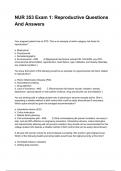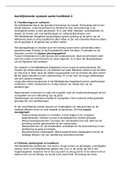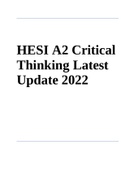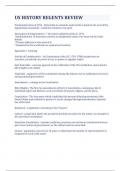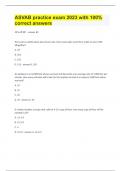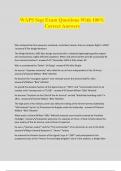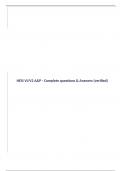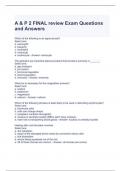Exam (elaborations)
NUR 353 Exam 1: Reproductive Questions And Answers
- Course
- Institution
Your pregnant patient has an STD. This is an example of which category risk factor for reproduction? a. Biophysical b. Psychosocial c. Sociodemographic d. Environmental - ANS A (Biophysical risk factors include PID, HIV/AIDS, any STD, chromosomal abnormalities, hypertension, heart fa...
[Show more]
